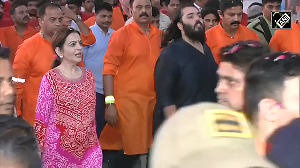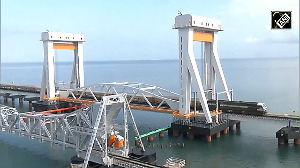 About 20,000 H-1B visas, one of the most sought after for overseas professionals, including Indians, are still up for grabs in the US which is struggling to fill up the allocated number of 65,000, even as less than a month remains before for the start of the next financial year.
About 20,000 H-1B visas, one of the most sought after for overseas professionals, including Indians, are still up for grabs in the US which is struggling to fill up the allocated number of 65,000, even as less than a month remains before for the start of the next financial year.
Primarily meant for computers and information technology professionals, the H-1B visas have been one of the most sought after for foreign professionals in previous years.
The US Citizenship and Immigration Service has been receiving several times the number of the allocated quota. However, this year, the USCIS is struggling to fill up the 65,000 H-1B visas as mandated by the US Congress.
This is mainly attributed to the strict approval policy adopted by the USCIS this year and the ongoing economic recession, which has resulted in a 26-year high unemployment rate of 9.7 per cent in the US.
"As of August 28, 2009, approximately 45,100 H-1B cap-subject petitions and approximately 20,000 petitions qualifying for the advanced degree cap exemption had been filed," the USCIS said in a statement.
USCIS will continue to accept both cap-subject petitions and advanced degree petitions until a sufficient number of H-1B petitions have been received to reach the statutory limits, taking into account the fact that some of these petitions may be denied, revoked, or withdrawn, it said.
Meanwhile the USCIS has warned applicants against filing duplicate applications, saying if detected at any stage, even approved petitions could be cancelled.
"USCIS will deny or revoke all petitions filed by an employer for the same H-1B worker if more than one filing is discovered," it said.
"If multiple petitions are discovered, whether one or more such petitions are approved, USCIS will data enter all those duplicative petitions, retain all fees, and either deny the petitions or, if a petition was approved, revoke the petition. The petitions will not be returned to the petitioner," USCIS said.
Though dominated by IT and computer professionals, H-1B occupations include architects, accountants, doctors and college professors.
The H-1B visa programme also includes certain fashion models of distinguished merit and ability and up to 100 persons who will performing services of an exceptional nature in connection with Department of Defense research and development projects or coproduction projects.
Although the current annual cap on the H-1B category is 65,000, not all H-1B non immigrants are subject to this annual cap. Up to 6,800 visas may be set aside from the cap of 65,000 during each fiscal year for the H-1B1 program under the US-Chile and US-Singapore Free Trade Agreements.
Unused numbers in this pool are made available for H-1B use for the next fiscal year.







 © 2025
© 2025